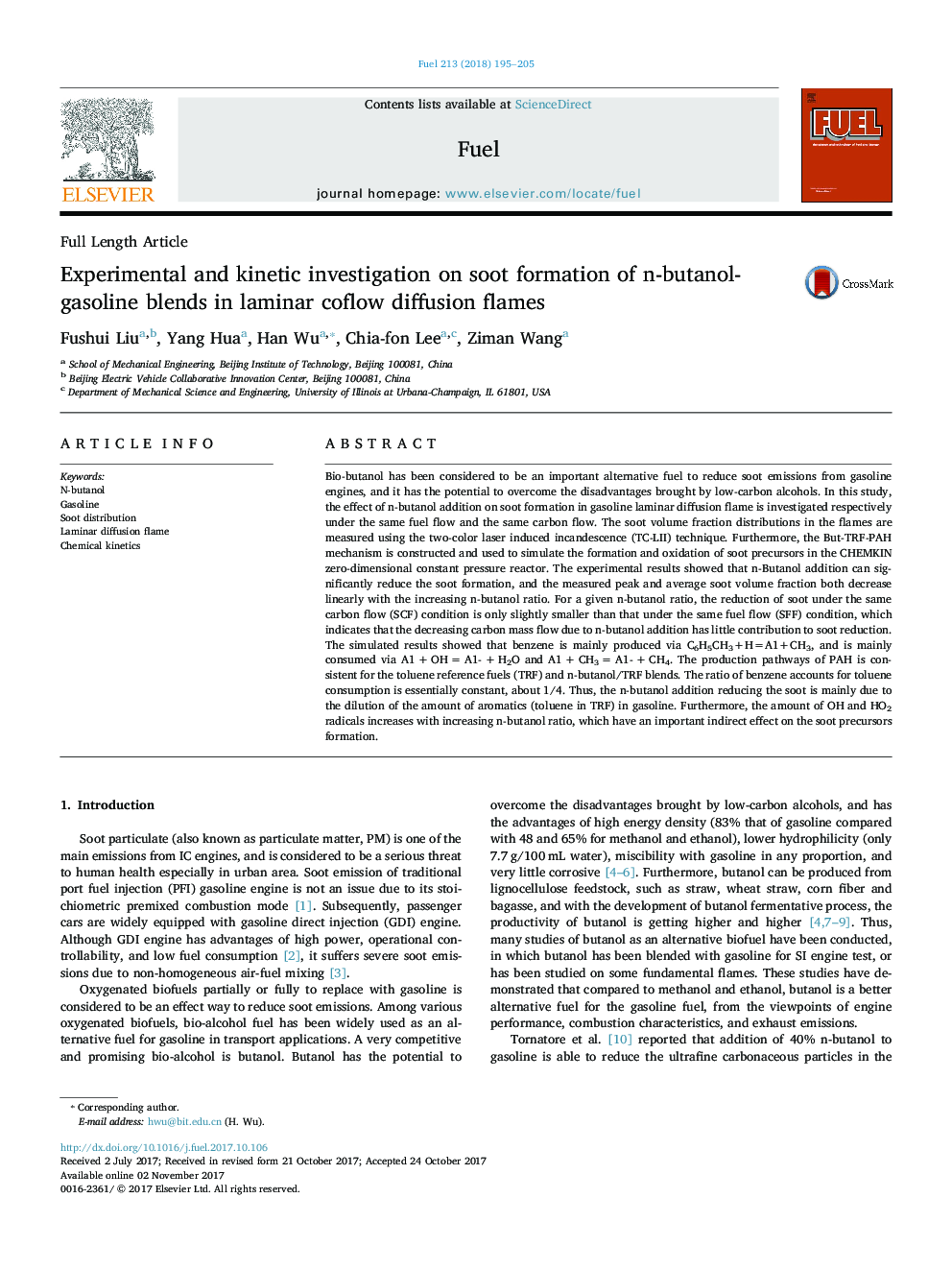| کد مقاله | کد نشریه | سال انتشار | مقاله انگلیسی | نسخه تمام متن |
|---|---|---|---|---|
| 6632571 | 1424951 | 2018 | 11 صفحه PDF | دانلود رایگان |
عنوان انگلیسی مقاله ISI
Experimental and kinetic investigation on soot formation of n-butanol-gasoline blends in laminar coflow diffusion flames
ترجمه فارسی عنوان
بررسی تجربی و جنبشی در شکل گیری دوده نان بوتانول-بنزین مخلوط در شعله های نفوذ انعطاف پذیر
دانلود مقاله + سفارش ترجمه
دانلود مقاله ISI انگلیسی
رایگان برای ایرانیان
کلمات کلیدی
موضوعات مرتبط
مهندسی و علوم پایه
مهندسی شیمی
مهندسی شیمی (عمومی)
چکیده انگلیسی
Bio-butanol has been considered to be an important alternative fuel to reduce soot emissions from gasoline engines, and it has the potential to overcome the disadvantages brought by low-carbon alcohols. In this study, the effect of n-butanol addition on soot formation in gasoline laminar diffusion flame is investigated respectively under the same fuel flow and the same carbon flow. The soot volume fraction distributions in the flames are measured using the two-color laser induced incandescence (TC-LII) technique. Furthermore, the But-TRF-PAH mechanism is constructed and used to simulate the formation and oxidation of soot precursors in the CHEMKIN zero-dimensional constant pressure reactor. The experimental results showed that n-Butanol addition can significantly reduce the soot formation, and the measured peak and average soot volume fraction both decrease linearly with the increasing n-butanol ratio. For a given n-butanol ratio, the reduction of soot under the same carbon flow (SCF) condition is only slightly smaller than that under the same fuel flow (SFF) condition, which indicates that the decreasing carbon mass flow due to n-butanol addition has little contribution to soot reduction. The simulated results showed that benzene is mainly produced via C6H5CH3+H=A1+CH3, and is mainly consumed via A1â¯+â¯OHâ¯=â¯A1-â¯+â¯H2O and A1â¯+â¯CH3â¯=â¯A1-â¯+â¯CH4. The production pathways of PAH is consistent for the toluene reference fuels (TRF) and n-butanol/TRF blends. The ratio of benzene accounts for toluene consumption is essentially constant, about 1/4. Thus, the n-butanol addition reducing the soot is mainly due to the dilution of the amount of aromatics (toluene in TRF) in gasoline. Furthermore, the amount of OH and HO2 radicals increases with increasing n-butanol ratio, which have an important indirect effect on the soot precursors formation.
ناشر
Database: Elsevier - ScienceDirect (ساینس دایرکت)
Journal: Fuel - Volume 213, 1 February 2018, Pages 195-205
Journal: Fuel - Volume 213, 1 February 2018, Pages 195-205
نویسندگان
Fushui Liu, Yang Hua, Han Wu, Chia-fon Lee, Ziman Wang,
